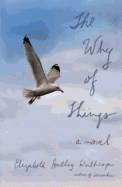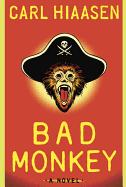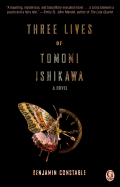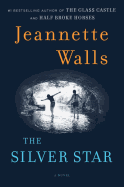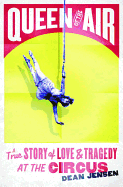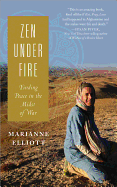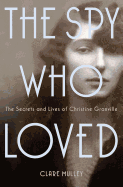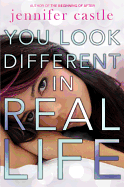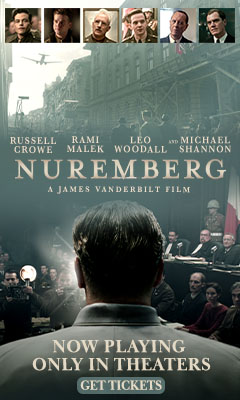Tuesday, June 18, 2013
Beach book season? Get serious. Packing summer reads is easy; the real challenge would be packing for the rest of your reading life. It's the classic reader's question: What books would you want if you were stranded on a desert island? I know we should all be sick of the cliché and just reply Hinckel's five-volume edition of Stranded: How to Survive on a Desert Island, or opt for George Costanza's classic response on a 1997 episode of Seinfeld:
Jerry: "Alright. You're on a desert island, you can bring five books. Which five do you take?"
George: "I gotta read five books?"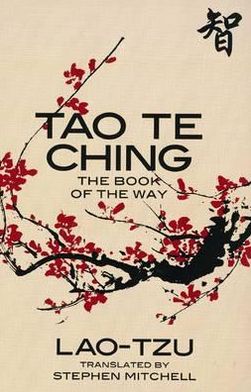
I was a mere child of 46 then, however, and 17 years later I seem to be packing for a different desert island. In no particular order--and subject, as always, to change in the future (you only have to ask)--here are my current picks, only one of which survived the 1996 list:
Tao Te Ching by Lao Tzu (trans. by Stephen Mitchell)
Cold Mountain: 100 Poems by the T'ang Poet Han-Shan (trans. by Burton Watson)
Zen Art for Meditation by Stewart Holmes and Chimyo Horioka
The English Patient by Michael Ondaatje
In the First Circle by Aleksandr Solzhenitsyn (trans. by Harry Willets)
What would you pack for your desert island trip? We'd love to know. Send your list to me or Shelf Awareness book review editor Marilyn Dahl, who will share her picks next week. --Robert Gray, contributing editor, Shelf Awareness
The Why of Things
by Elizabeth Hartley Winthrop
In Elizabeth Hartley Winthrop's The Why of Things, a horrifying event causes an already fractured family to further splinter... or does it?
It's been a rough year for the Jacobs family since the beautiful and accomplished Sophie Jacobs took her own life. Her parents struggle with guilt and disconnection, her teenage sister, Eve, turns into an angry rebel and youngest sister Eloise is frightened of the prospect that Sophie's ghost is haunting her. The last thing the family needs is more misery, but one year after Sophie's death, a young man commits suicide by driving his truck into the quarry of the family's summer home.
Rather than turning inward after this latest tragedy, Sophie's mother, Joan, is forced to reach out to another mother experiencing her exact grief. Eve, determined to solve the mystery of the circumstances surrounding the crash, finds a channel for her furious energy while Eloise adopts the deceased young man's dog.
Hartley Winthrop (Fireworks) draws you into a warm embrace and you are truly sorry when the book ends. Her characters are so superbly written that you feel intimately acquainted with them as she weaves her words into a seamless tableau. The Why of Things is a novel without romance, but certainly not without love. It's a tale of a family facing their worst fears and realizing that life does indeed go on. Mostly, though, it's a reminder that in this lifetime, there are some mysteries that remain unsolved. --Natalie Papailiou, author of blog MILF: Mother I'd Like to Friend
Discover: An outstanding, uplifting novel about how one family keeps on living after tragedy strikes... and strikes again.
Three Lives of Tomomi Ishikawa
by Benjamin Constable
Tomomi Ishikawa's suicide is anything but ordinary. There is no body, no trace of her mark on the world besides a cryptic suicide note left for her friend and confidant Ben Constable. But the note is just the beginning--within it, Ben finds clues that lead him into the eerie, hidden past of Tomomi, known to her friends as Butterfly. As Ben traces Butterfly's story across the streets of Paris, then over the ocean to New York City, her story gets darker and more twisted; soon, Ben is questioning not only his friendship with the presumed-dead Butterfly, but the very nature of their relationship.
Three Lives of Tomomi Ishikawa, Ben Constable's debut, is a dark, imaginative novel that is as creative as it is suspenseful. As Constable the author follows the fictional Ben on Butterfly's treasure hunt across the world, readers are drawn into a story that is really a story within a story within a story; Constable's naming the main character after himself is only an added layer of complexity in an already intricately complicated novel. Though it requires a bit of patience at first, this complex structure pays off. Three Lives of Tomomi Ishikawa is beautiful and haunting, blurring the lines between what is real and what is imagined--and how much it really matters when we are telling a story. --Kerry McHugh, blogger at Entomology of a Bookworm
Discover: A haunting debut novel in which a writer traces clues in a friend's suicide note to reconstruct her darkest secrets.
The Silver Star
by Jeannette Walls
Readers of Jeannette Walls's memoir The Glass Castle will recognize some of the pivotal elements in her debut novel, The Silver Star. Twelve-year-old Bean is a feisty, precocious character reminiscent of Walls's self-portrayal; her older sister, Liz, is a prodigy who voraciously reads the classics and skillfully evades a child kidnapper when she and Bean are traveling.
Their mother, Charlotte Halladay, aspires to be a star on par with Joni Mitchell, and is constantly chasing her dream in Los Angeles, leaving little time or energy for parenthood. She also has a penchant for choosing boyfriends who will betray her, whom she derisively refers to as "tirekickers." When Charlotte has a breakdown and flees to Los Angeles for an even longer period than usual, Liz and Bean--fearful the police will try to force them into foster care--decide to visit their uncle Tinsley in Virginia. What follows involves the girls' attempts to integrate into an unfamiliar rural community, discover their family past and contend with a trauma that threatens to undermine these efforts.
Their well-meaning but unstable mother--who gets some of the novel's best lines--mirrors in some ways Walls's own intellectually rebellious, voluntarily homeless mother. Her voice, along with Bean's, may be the greatest strength of The Silver Star.
Even in the tiny town of Byler, Va., the political conflagrations of the early 1970s are felt. Bean and Liz arrive just in time for the first year of racial integration at their school, while the specter of the Vietnam War looms. Walls's novel is as much about the period and its effects in a remote area of America as it is about two sisters struggling to come of age without parental support and against all odds. --Ilana Teitelbaum
Discover: The author of The Glass Castle shifts to fiction, with a story of two sisters whose eccentric mother leaves them to fend for themselves.
One Thousand and One Nights: A Retelling
by Hanan Al-Shaykh
Most of us are familiar with the premise of One Thousand and One Nights (or the Arabian Nights): King Shahrayar would take a new wife each night, killing her in the morning, until the evening the vizier's daughter Shahrazad started telling him a story, leaving off just before the end so he'd spare her life for another day. Of course, the next night would bring another cliffhanger, and the cycle would repeat anew.
Lebanese author Hanan al-Shaykh (Women of Sand and Myrrh) has recast several of Shahrazad's tales in modern English, presenting them in a coherent narrative that is as spellbinding as ever. Al-Shaykh has selected 19 of the original stories, knitting them into a single extended narrative. Starting with "The Fisherman and the Jinni," she moves on to the fisherman's brother, the porter and the three ladies, a hunchback, a merchant, three dervishes, a woman and her five lovers, Sinbad the Sailor and then back to the porter and the three ladies.
The age-old conundrum regarding literature's function--is it to tickle or to teach?--is solved here, and the answer is: both. You could make the case that the clever, resourceful Shahrazad is literature's first feminist heroine, and each of her stories is filled with nuggets of simple philosophy. "I wish my story was similar to those of the two dervishes who have gone before me," says the third dervish at the onset of his tale. "But I have learned, as the days have passed, that there is nothing to be gained from regret; it changes nothing, leaves us melancholy and in pain for ever." --Valerie Ryan, Cannon Beach Book Company, Ore.
Discover: Hanan al-Shaykh doesn't cover all 1,001 of Shahrazad's stories, but the 19 she has presented are charmingly retold in modern English.
Children of the Jacaranda Tree
by Sahar Delijani
Sahar Delijani tells her own life story in her debut novel, Children of the Jacaranda Tree. The title refers to the offspring of Iran's political activists, men and women imprisoned in Tehran in the early 1980s.
As the novel begins, some children see their parents carted off to prison, some are born in prison and still others are born never having the chance to know their parents. Using alternating points of view, Delijani depicts life within Evin Prison and the lives of those on the outside. Then, she shifts to 2009 and readers are introduced to those same children as adults, allowing an inside view into how their experiences have shaped and defined them.
Delijani's debut is full of rich characters, meticulously developed. Their authenticity draws the reader into their experiences, making it difficult to remain unaffected. The apparent contradiction between the horrors of Iran's revolution and the beauty with which Delijani tells her story becomes clear in the second half of the novel, as the strength and perseverance of the grown-up "children" create an uplifting atmosphere and a sense of hope, of renewal.
Children of the Jacaranda Tree is an enlightening look at--and a reminder of--the individual human element in the larger movements of politics and history. Given its autobiographical roots, Children of the Jacaranda Tree is an especially admirable and brave debut. --Jen Forbus of Jen's Book Thoughts
Discover: An intimate tale of the intertwined lives of those affected by the turmoil and political unrest of a nation in the midst of revolution.
Bobcat and Other Stories
by Rebecca Lee
Each of the seven stories in Rebecca Lee's debut collection satisfies. While the reader may crave more of her writing than Bobcat and Other Stories offers, it's not that these tales aren't fleshed out, it's because we want more of them.
There's a sense of intimacy and immediate immersion to Lee's stories, all written in the first person. She includes many reflections on language, which feels appropriate in pieces so carefully crafted. " 'Oh, hey, go ahead.' This is the whole problem with words," the collection's one male narrator frets as he watches the student he pines for in their select group of hopeful architects leave to visit their dogmatic, renowned professor. "There is so little surface area to reveal whom you might be underneath, how expansive and warm, how easygoing, how cool, and so it all comes out a little pathetic and awkward and choked."
Another character suspects her fiancé, "the Romanian liar," is corresponding with a wife in his native land, but she can't interpret the letters. Desire is another theme, most poignantly in the story of the young American who must interview her soulmate's potential marriage partners, in keeping with his Chinese family's tradition.
In the first and last stories, Lee's delightfully optimistic and quirkily flawed protagonists seek marital bliss. In spare accountings, Lee forecasts trouble to come, while terrines are prepared, soup ladled, and guests greeted. With her treatment of the ordinary as comfort, the reader senses all will be well, come what may. --Cheryl Krocker McKeon, bookseller, Book Passage, San Francisco
Discover: A collection of short stories that lift ordinary characters and settings into delightful, carefully crafted nuggets of truth, often funny and always engaging.
Mystery & Thriller
Bad Monkey
by Carl Hiaasen
Carl Hiaasen returns to his native element in Bad Monkey, a mystery filled with dark comedy, morbid clues, corrupt land despoilers--er, developers--a dash of romance and a foul-tempered monkey.
Andrew Yancey's already lost his position with the Miami Police, and he's now about to lose his new job with the Monroe County sheriff's office, thanks to an ill-considered and widely witnessed act of violence involving his soon-to-be-ex-girlfriend's husband and a cordless vacuum cleaner. Demoted to health inspector, Yancey can barely eat after counting cockroaches all day. Oh, and let's not forget the disembodied arm in his freezer.
Allegedly, said arm became estranged from its owner due to a boat accident followed by a shark feeding frenzy, but Yancey's not buying it, especially not after the arm-owner's daughter tells him she thinks her stepmother murdered her father for his money. If he can solve a murder and bring the killer to justice, Yancey believes his commander will undo his demotion. His investigation, assisted by beautiful medical examiner Rosa Campesino, will take him from Florida to the Bahamas, where he'll meet a Bahamian struggling to save his beach from land developers, a toothless sex-crazed voodoo woman called the Dragon Queen and the eponymous bad monkey.
Calling a Hiaasen novel funny is like calling the ocean damp; the author continues to show off a twisted sense of humor unlike any other. Characters who choose to exploit nature receive their just deserts in ways straight out of an environmentalist's fantasies as Hiaasen's passion for wild Florida shines through once again, this time with an added note of empathy for the Bahamas. --Jaclyn Fulwood, youth services manager, Latah County Library District; blogger at Infinite Reads
Discover: Hiaasen's wicked sense of humor is on display once again as Andrew Yancey investigates a murder involving a severed arm, a voodoo woman and a very bad monkey.
Biography & Memoir
Queen of the Air: A True Story of Love and Tragedy at the Circus
by Dean Jensen
Dean Jensen's Queen of the Air is a real-life Water for Elephants, passionately recounting the life, loves and career of Lillian Leitzel--once the most famous circus performer who ever lived. Jensen brings decades of loving research to life in a magnificent and thrilling portrait of a tiny, flamboyant woman who commanded the world's attention and came to the kind of grand, shocking demise that served only to burnish her legend.
Born in Germany to a teenaged circus performer in 1891 (or thereabouts) and raised by her grandparents, Leitzel was introduced into the family business early and, with her fearless aerial showmanship, soon surpassed her mother's career and became a superstar in the U.S. with the Ringling Bros. and Barnum & Bailey circus. Tempestuous and mercurial, she fell in love with the legendary trapeze artist Alfredo Codono, but their marriage, and their lives, would end with the kind of drama and tragedy befitting their outsize personas.
Jensen started this book more than 30 years ago, and was thus able to interview people who knew Leitzel or Codona personally. As a result, Queen of the Air is history on fire, a vibrant romance novel--redolent of dusty circus grounds, sweat-soaked costumes and the heady air of exotic sensuality the circus brings to town--masquerading as the biography of an unforgettable woman. --Cherie Ann Parker, freelance journalist and book critic
Discover: Decades in the making, a thrilling portrait of the life, loves and shocking death of a woman who may have been the greatest circus performer of all time.
Zen Under Fire: How I Found Peace in the Midst of War
by Marianne Elliott
"You might expect people who go to live and work in war zones to be thick-skinned types for whom flak jackets and rocket fire are water off a duck's back. Not me," writes Marianne Elliot in Zen Under Fire, her candid and moving account of more than two years as a United Nations human rights officer in war-ravaged Afghanistan. A lawyer ordered to observe and follow the rules of UN protocol, Elliot discovers her dream job is not an easy assignment as she struggles with the "Sisyphean task" of documenting hundreds of cases of injustices "that keep vulnerable Afghan people from getting out of poverty and fear."
Security risks are rampant as tribes clash and rockets destroy lives and families, adding tension to battles that go back generations. Elliot's frustration over the rules ensuring monetary aid and food, blankets and shelter get to the right people is apparent. She's overwhelmed by the stories of torture, beatings and executions of innocent villagers and suffers from increasing anxiety and depression.
Over time, however, Elliot learns to navigate the slow-moving political and humanitarian machinery as the Afghans do--with patience. She turns to yoga and Buddhism to help calm her inner fears and her desperate need for contact and emotional closeness with her boyfriend. Readers gain access to behind-the-scenes moments in the lives of the Afghanis who befriend Elliot, as they help her navigate the dusty streets of the small villages where she works. Zen Under Fire is a stark and valuable glimpse into one humanitarian's effort to bring peace to the Afghan people and herself. --Lee E. Cart, freelance writer and book reviewer
Discover: A UN human rights official takes an outspoken look at the pros and cons of aid in Afghanistan.
The Spy Who Loved: The Secrets and Lives of Christine Granville
by Clare Mulley
During wartime, Winston Churchill once noted, the exploits of intelligence agents in the field are "equal to the most fantastic inventions of romance and melodrama." Clare Mulley uses Churchill's words as an epigraph to The Spy Who Loved, a biography of Christine Granville that brims with scenes of danger, intrigue and romance.
Born Krystyna Skarbek to a Polish count and his Jewish wife, Granville enjoyed a privileged childhood, marrying young but quickly divorcing her first husband. After Hitler's invasion of Poland in 1939, she volunteered for the British Secret Intelligence Service (SIS), becoming the first female British agent in the field. Beautiful, quick-witted and fearless, Granville spent the war pinwheeling around Europe and North Africa, collecting vital intelligence as easily as she collected lovers, never settling in one place or in one relationship for long.
Through extensive research, Mulley (The Woman Who Saved the Children) pieces together the story of Granville's exploits and her complicated web of relationships with fellow agents--most of them men, many frustrated expats like herself. Mulley's portrayal of the personal and political conflicts between the various Allied intelligence services mirrors the constantly shifting landscape of international relations during the war. She pays particular attention to the Allies' continuing betrayal of Poland, which left both Granville and her country penniless and stranded after the victory in Europe.
Attractive but enigmatic, Granville remained elusive even to those who loved her best. Mulley's account captures the courage and the complexities of this extraordinary woman.
--Katie Noah Gibson, blogger at Cakes, Tea and Dreams
Discover: A multifaceted portrait of an exiled Polish aristocrat who became Britain's first female intelligence agent during World War II.
Children's & Young Adult
A Big Guy Took My Ball!
by Mo Willems
Just when you think Mo Willems (Don't Let the Pigeon Drive the Bus!) cannot top his earlier stellar efforts, he comes up with a new Elephant & Piggie adventure that builds the confidence of beginning readers while it also introduces the concept of relative size.
"Gerald!" yells Piggy in a speech balloon as he runs in from the left side of the page. Gerald's bounce and startled expression telegraph the volume of Piggy's voice. "I found a big ball, and it was so fun!" But a big guy came and "HE TOOK MY BALL!" says Piggy, weeping. Piggy's pachyderm pal is outraged ("Big guys have all the fun!" says Gerald) and, being no small fellow himself, heads off to get Piggy's ball. Then Gerald discovers just how big this big guy really is. "He is bigger than I am," Gerald tells Piggy, "Much bigger!" Willems milks the humor of the situation. "I am smaller than he is," Gerald continues, "Much smaller."
Willems uses capital letters, type size and bold lettering to maximum effect. So when the blue whale who has the ball in question thanks Piggy for finding his "little ball" in giant bold type, the words occupy nearly an entire page. And even though they are initially frightened, they quickly learn that this biggest guy thinks "Little guys have all the fun." When the three invent a ball game together, they realize they can all have fun, no matter what their size. --Jennifer M. Brown, children's editor, Shelf Awareness
Discover: A new Elephant & Piggie in which Mo Willems outdoes himself with humor for beginning readers and a lesson in relative size.
You Look Different in Real Life
by Jennifer Castle
In You Look Different in Real Life, Jennifer Castle (The Beginning of After) digs deeply into the complexities of life through the lens of a series of documentaries similar to Seven Up (made in 1964 by Britain's Granada Television) and its follow-up films.
"Sometimes, I hit pause at a random moment when I'm on film and stare at my eyes, and try to figure out why they chose me," says narrator Justine. When she was six years old, Justine was featured in a documentary with four other children who shared the same table in kindergarten. The show documented their families, their friends and their school. Five years later, her sense of humor made Justine the darling of the documentary when the crew came back to film them again. Now the same producers have returned to capture Five at Sixteen. Except things are quite different now from when the kids were six. Justine is unsure that she can live up to the expectations set by the previous films. And the other four teens aren't exactly jumping at the chance either.
Between flashbacks to earlier films and personal interactions between the people who have grown up on camera together, readers will easily become invested in each person's story. Castle does a superb job of endowing each teenager with depth and emotion, even though the narration is solely through Justine's point of view. The complexity of life shines through as we discover, along with the teenagers, just how much someone can change, especially when his or her life has been public for years. --Shanyn Day, blogger at Chick Loves Lit
Discover: A periodic documentary series featuring a group of kids--now teens--forces them to evaluate themselves and their friendships.
| Advertisement nuremberg--now playing in theaters |


